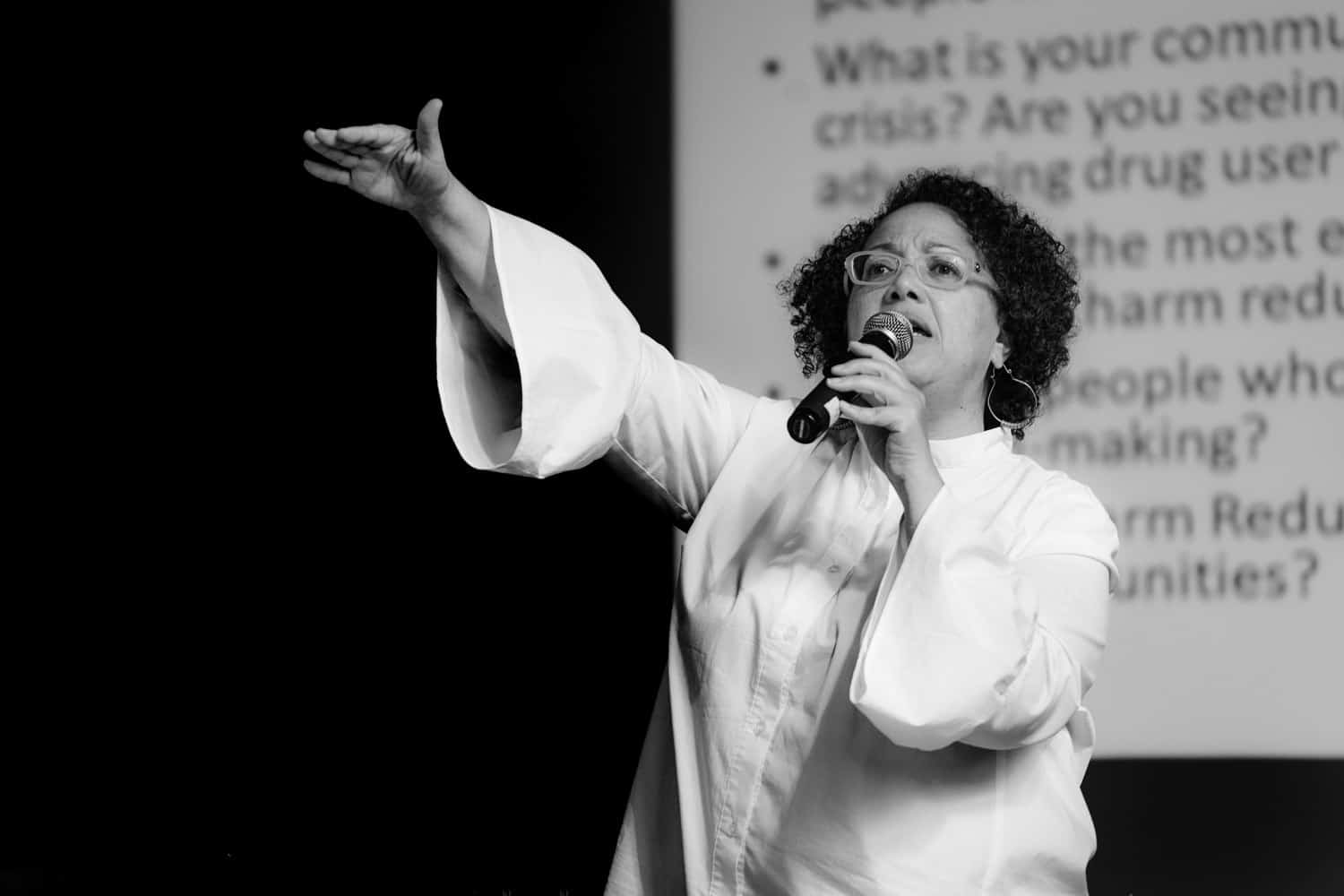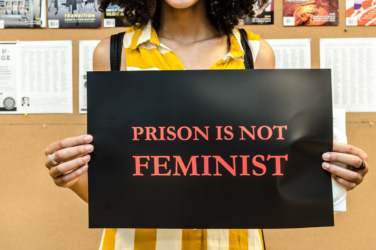The reign of the middle-aged white man is over,” declared House of Cards President Claire Underwood in a steely-eyed address to the nation last fall. Other sources have echoed this statement through provocative articles on the men America left behind and how “Time’s Up” on the male-dominated culture of harassment and inequality.
But is it true that that the rule of the white man is on the decline? It depends on perspective.
From 2016 to 2017 the number of female CEOs on the Fortune 500 list grew 50 percent, but the next year the number dropped back down—and women still make up only 6 percent of this list. Within the nonprofit sector, 22 percent of all incoming CEOs in 2018 were women—up from 18 percent the previous year, but still under a quarter. Among the top 100 grossing films in 2018, 8 percent more featured female leads than in 2017, but female protagonists are still in the minority.
For women of color, the gap between rate of advancement and leadership share is even wider. The number of businesses owned by women of color surged 163 percent in the past decade, but income levels for that same group of business owners dropped markedly. The number of films portraying a female lead of color tripled last year, but still accounted for only 11 of the top 100 top-grossing films of 2018.
And in the world of nonprofits, leadership by women of color hovers under 10 percent, and has not changed since 1994.
Women of Color Taking the Reins
There is hope, though. Some organizations are beginning to recognize the value of bringing diverse backgrounds to leadership positions, and the likes of Planned Parenthood, the American Association of Retired Persons (AARP), the Drug Policy Alliance (DPA) and Harm Reduction Coalition (HRC) have recently passed the torch to women of color (Planned Parenthood for the second time). The stories behind some of these transitions reveal an interesting pattern
Founded in 2000, the Drug Policy Alliance is the largest drug policy nonprofit in the country. Ethan Nadelmann, a white man, served as executive director until stepping down in 2017—when the organization hired Maria McFarland Sanchez-Moreno, a Latina woman, to replace him.
“Nonprofits were often founded by white males who came from certain educational backgrounds and had connections to funding,” McFarland Sánchez-Moreno tells Filter, though she insists that she herself is also privileged in many ways. “As these movements have grown and developed and directly impacted people have gotten more involved … you have more people of color joining these organizations, rising and taking ownership of them.”
McFarland—who was recently profiled by Filter—had an impressive past career working on human rights and drug policy in Colombia, Mexico, Afghanistan and the United States. Yet due to structural barriers faced by women of color, even that resume might not have been enough to win her an executive-level position until recently.
After nearly two decades as the face of DPA, her predecessor Nadelmann has embraced retirement. “Part of why I got into [drug policy] was to speak truth to power,” he tells Filter, recalling the early years of his fight against draconian drug laws. “But in the last few years there is that sense that yes, I am someone who has benefited from white privilege … it was becoming a bit of a handicap in terms of being a public spokesperson for this issue.”
Merely having some women of color in leadership positions does not remove the structural barriers that many others still face.
Though race is not the primary reason Nadelmann retired, it is an emerging factor in several executive transitions. Though the country has long documented that people of color are disproportionately impacted by drug policies, the number of people of color in positions of leadership at criminal justice-focused nonprofits is still paltry.
But even those who welcome the advancements of people of color are sometimes cautious. Racism is insidious in its camouflage. Merely having some women of color in leadership positions does not remove the structural barriers that many others still face in the workplace and elsewhere. Worse, it may sometimes serve to allow an organization the appearance of diversity while still maintaining the very obstacles that prevent the mass advancement of people of color.
For Monique Tula (pictured above), who is the executive director of Harm Reduction Coalition after a long career in HIV prevention, the distinction between tokenism and real leadership is paramount. In 2016 Tula, who identifies as a mixed-race black woman, succeeded Allan Clear, the organization’s white, male executive director of 20 years. A year later she kicked off the new era by releasing a North Star Statement, which outlines Harm Reduction Coalition’s new guiding principle: to create spaces for dialogue and action that help heal the harms caused by racialized drug policies.
It sounds like a benign statement—and one repeated in various forms by many nonprofits working in criminal justice reform. But paying lip service to the importance of reaching people of color with services is often vastly different to what happens in practice.
Deeper Structural Challenges
Organizations primarily run by white people on race-neutral platforms tend to attract other predominantly white partners who craft and deliver messages in a way that appeals (often unintentionally) primarily to whites.
For example, one common message of wellness campaigns is to eat more fruits and vegetables. It’s a simple message that could benefit anyone, regardless of race, gender, geography, etc. But choosing to eat more fruits and vegetables is easier if you have access to grocery stores and farmers markets that sell fresh produce, as well as the funds to purchase fresh food, which is often more expensive than processed food.
Some organizations are now applying an explicit racial framework to policies and programming.
African Americans are twice as likely as white people to live in “food deserts” with a scarcity of grocery stores. In these areas, food is more readily available from quick-marts with nary a fruit in sight that isn’t drowning in syrup. What does “just eat more veggies” look like here?
Recognizing this, some organizations are now taking a different approach, applying an explicit racial framework to policies and programming. Instead of simply urging everyone to eat more healthily, an organization can focus on the barriers to making healthier food choices that many people of color face. Addressing this area, where need is highest, will raise the health index of the community overall.
But the thing to understand about an explicit racial equity framework is that these efforts go well beyond implementing programs that provide targeted assistance to people of color who suffer disproportionate social harms. Not only does this new paradigm mean recruitment of people of color to staff and board, and trainings on the history of structural racism in the United States, it also means dismantling traditional structures of organizational leadership and decision-making—a set of norms provocatively titled by activists “white supremacy culture.”
This last goal is the kicker for many people who can go along with the idea of a racial equity framework, but only to a point. The Challenging White Supremacy (CWS) group of activists of color describes characteristics of organizations run on a white supremacy culture as including having one person as head decision-maker rather than a team, emphasis on measurable goals, encouragement of perfectionism, and linear definitions of progress, among many other things. (I would encourage people to read their broader definition for a deeper understanding.)
Concepts That Can Be Hard for White People to Grasp
Years ago, when I was first introduced to the concept of white supremacy culture, I thought that attempting to dismantle it was a sure recipe for organizational chaos, inefficiency, and relentless pursuit of an impossible goal. Perfect equity cannot exist among imperfect humans. As I saw it, singling out certain minority groups for special consideration would create never-ending divisions and subdivisions of new groups jockeying for a place at the table.
I am not the only white person to react that way. Tula admits that Harm Reduction Coalition has lost members due to their efforts to reorganize the power structure within the organization. Other organizations tell me they have lost community partners. But the level of difficulty does not appear to deter Tula and others.
“It has taken 400 years to [create the current power system in the United States] and I am realistic that none of what we are trying to do is going to change overnight,” Tula tells Filter. “We are not trying to spare people from the reality of this work or create the illusion that we have this handled.”
Her words trigger painful memories. Until last year I worked for a nonprofit that tried to have a conversation about challenging white-dominant culture within our organization. Even though we were all supposedly committed to racial equity, talking about race was like dropping a bomb in the room. I was surprised at how resistant many people were. I was surprised at how resistant I was.
Deep down, I was also afraid. I feared that in a place where diversity was so highly prized, people might think less of me.
Talking about structural racism as an abstract—something perpetuated by the criminal justice system or the government, or the police—was not hard. Neither was claiming commitment to racial equity and throwing around theories as to why it was so difficult to recruit and retain people of color at the agency. But actually making a fundamental change in the way we operated, committing to racial equity in a way that was uncomfortable and might sacrifice short-term goals—which we depended on for funding—in favor of long-term goals, caused some people, including myself, to hit the brakes.
At the time, I didn’t see my reluctance to change as a resistance to people of color in leadership. I saw it as resistance to the chaos and inefficiency that could result from a leadership “team” rather than a single executive and a lack of emphasis on measurable outcomes. I didn’t disagree with the goals, but with the methods of delivery. At least that is what I told myself.
Deep down, I was also afraid. I feared that in a place where diversity was so highly prized, people might think less of me because of my skin color. I feared being judged, silenced, and excluded from discussions and decision-making because my opinion would be less valued than those of people who were members of the favored group. In other words, I feared that people of color might treat me the same way white people have treated them for centuries.
Today I still grapple with questions and doubts, but my fears have lessened because I have developed a better frame of reference.
For most of history, men were the de facto heads of households. Women were originally property of their husbands, then elevated to second-class citizenship, and now, in the last few decades, are fighting hard for equity. That means shared responsibilities and decision-making between partners, which can make life more complicated.
There used to be a simple formula for making family decisions, albeit one that gave one partner an unearned right and relegated the other to a supporting role. But most of us accept the modern challenge to balance work, family life and power dynamics as not only necessary, but desirable.
Yes, the household leadership structure is less clear. Yes, equitable decision-making opens the door to disagreement and power struggle. This new world requires constant, clear communication, learning to compromise, and openness to different points of view. It’s messy now, but I think with time and experience, we will improve.
“Goddammit, we aren’t taking this anymore.”
“Globally speaking, this is a time of enormous change that is causing instability,” says Tula. “I think there is an awakening happening around the globe. Maybe you could call it a spiritual awakening or a ‘Goddammit, we aren’t taking this anymore’ [awakening]. People are organizing and stepping into positions of power we haven’t had access to.”
Women of color in leadership can be a catalyst for this change, though the burden of implementation and leadership should not rest solely on these leaders. Change might mean that traditional structures of hierarchy and decision-making are disrupted in the workplace just as they have been at home. The process of learning to share power will be challenging and complicated, but through it, we will grow.
Perfect equity may be an impossible dream, but that doesn’t excuse us from striving to improve the world we live in. Life is a journey of learning, setbacks, growth, mistakes and improvement. Each society, though it may take generations, goes through the same process. We should measure success not only by whether we attain a goal, but by how far we have come from where we started.
Photo of Monique Tula by Nigel Brunsdon. You can find more of his work at NigelBrunsdon.com.





Show Comments